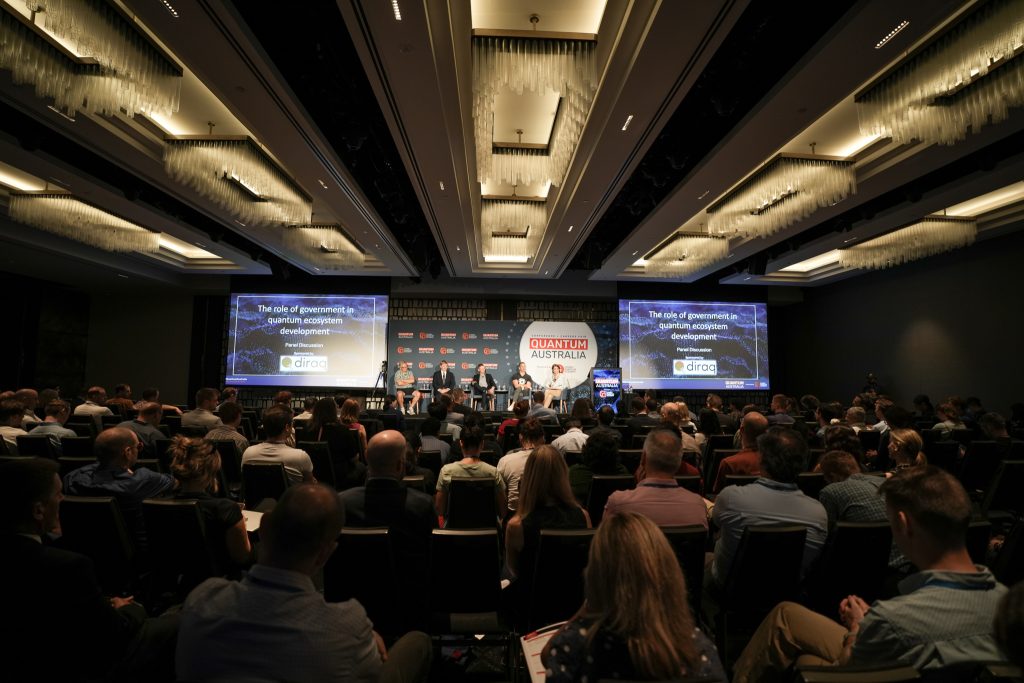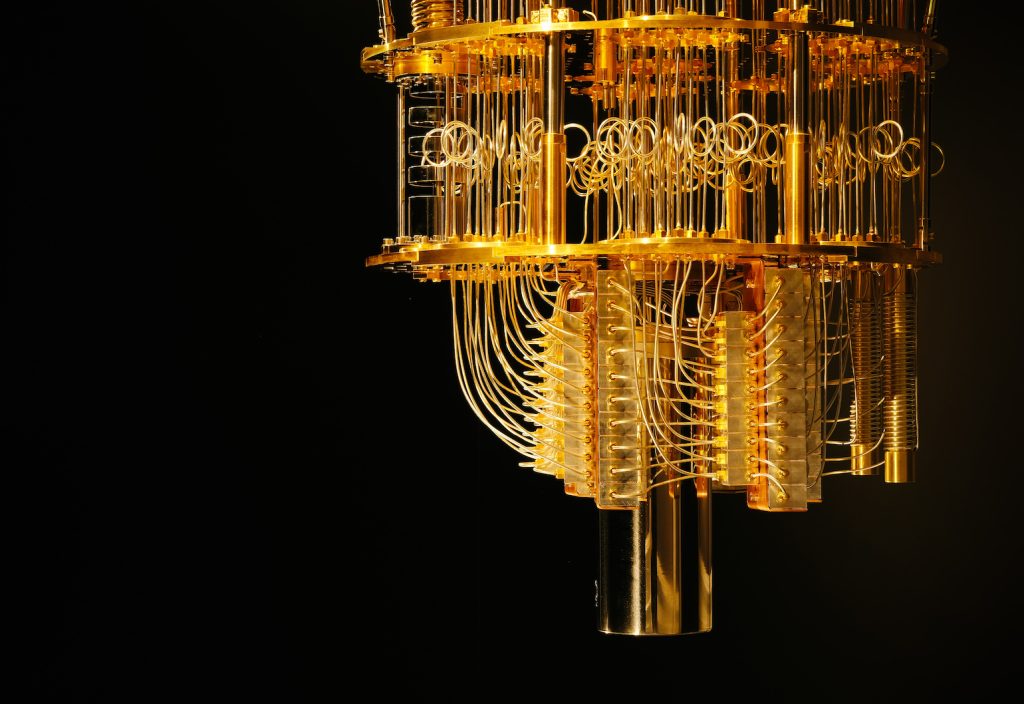Australia has a front row seat in one of the hottest, most competitive frontiers of innovation: quantum computing. Unlike prior occasions, it may retain its lead this time.
Few problems in transport engineering are as complex as managing a busy port. Take Fremantle Ports: it juggles 12,500 trucks, 400 train paths and up to 15,000 containers each week, making the efficient flow of cargo critical.
This requires a wickedly intricate orchestration of all moving parts — marine side, quayside and landside — so that the right container is in the right terminal when needed, the right container is loaded on to the right ship, and the right truck enters the gates at the required time.
To manage this, supply chain operators rely on Monte Carlo simulations, a class of computational algorithms for demand modelling and integrated transport optimisation that can take days to calculate. And when things change — due to delays from weather, breakdown or traffic — the model becomes useless.
But this type of combinatorial optimisation is perfect for quantum computers, which can solve certain problems exponentially faster than existing “classical” computers.
Even though they are in their infancy, quantum hardware systems are now available that, coupled with classical computers, could crack the problem. And that’s what Fremantle Ports is exploring.
“The beauty of quantum optimisation is that it can be done much faster, and the model can be adjusted in real time to take account of changes,” Dr Cathy Foley, Australia’s Chief Scientist, told attendees at the recent Quantum Australia conference.
Reporting on a previous visit, she marvelled at Fremantle Ports’ ambition: “They’re working on putting together a consortium among shipping lines, the container terminal and trucking companies to try to make this happen.”
According to Foley, it’s just one example of how the promise of quantum computing is seeping into all sorts of industries at an unexpected pace.
“In 2023, ‘quantum’ has entered the lexicon,” she says.
“The government is very cognisant of the transformative potential of quantum technologies, as well as the need to ensure we make the most of this moment.”
Australia has all the components to make the most of quantum computing, she says: excellent foundations built on decades of patient fundamental research, a lively research community, an energetic cluster of start-ups creating novel solutions and applications — and governments keen to catalyse success.
“We’re in a sweet spot,” Foley continues. “And we have momentum.”
Quantum computing is the next big technological revolution, likely to reap enormous benefits in the decades ahead — but it is also one of the most competitive frontiers of innovation.
Today, Australia has an enviable lead. But we’ve been here before: in 1949, at the very dawn of the computer age, Australian engineers were among the first to build a fully digital computer – CSIRAC. But we let that lead slip away.

Keeping ahead
However, this time, Australian governments, researchers and industry are determined not to repeat history.
“At last count, we have in this country around 20 quantum-related companies,” Ed Husic, Federal Industry and Science Minister, told the conference. “And the number is growing as Australian innovators make new discoveries and identify ways to commercialise them. Our firms are branching out overseas, and global heavyweights like Google are partnering with our research institutions to push the quantum envelope.
“We’ve long had an outsized impact on quantum research, and people who had their training in quantum in Australia are now in leadership roles — in research, industry and government, both here and abroad.”
Husic promises that the Federal Government’s National Quantum Strategy will be “the beginning of a conversation, not a punctuation mark. This is a critical opportunity for the country. We believe in the quantum ecosystem, and its role in national prosperity.”
The line-up of heavyweight speakers at the conference suggests Australia is being taken seriously these days, with industry players such as IBM, Google, Microsoft, Amazon, venture capital firms IQT and Blackbird, as well as the US’s Quantum Economic Development Consortium and the UK’s National Quantum Computing Centre all taking part.
“Stop having small ambitions,” says Professor Michael Biercuk, founder of the University of Sydney spin-off Q-CTRL, a $70.8 million quantum software startup that counts Airbus, Salesforce and Main Sequence Ventures as investors.
After decades of research and more than $1 billion in government funding, the local quantum sector is at a tipping point, he says, and many Australian companies could become global leaders: “We have an opportunity to be everywhere in the value chain.” Nevertheless, Foley admits this is “difficult science, right at the edge of human capability”.
Up to the limit
While creating computers that operate on the principles of quantum mechanics – the physics of how matter and energy behave at subatomic level — has long been recognised as enormously powerful, it is a devilishly complex undertaking.
Unlike today’s “classical” computers, which process information in binary bits — zeroes and ones — quantum computers use “quantum bits”, or qubits, which can exist in multiple states at once.
Known as superposition, this allows a multitude of computation strategies — some exponentially faster, some simultaneous — far beyond modern computers. Another property, entanglement, allows quantum computers to process data in parallel.
Although a nascent technology that is still delicate and unstable, quantum computers are already being used to simulate chemical and molecular interactions to help discover new drugs or novel materials.
As they scale up over the next decade, quantum computers will revolutionise cryptography, financial modelling and chemical engineering; easily solve complex optimisation problems; and accelerate some machine learning algorithms used for artifi cial intelligence.
It’s this promise that’s attracting so much investment: the global market is already valued at US$10.3 billion and growing fast.
Thanks to enormous investments by governments and commercial companies, the market is predicted to reach US$125 billion by 2030.
Modelling by the CSIRO in 2022 predicted quantum computing will generate $2.2 billion in Australian revenue by 2030 and nearly $6 billion by 2045, creating 8700 new jobs by 2030 and 19,400 by 2045.
The list of well-heeled Australian start-ups today is indeed impressive.
Among them is Diraq, which spun out of the University of New South Wales (UNSW) last year with $20 million in funding. While existing quantum computers have fewer than 100 qubits, Diraq’s ambition is to put billions on a single chip within a decade.
And because it relies on the same CMOS fabrication technology as today’s computers, fellow researchers don’t bat an eyelid at Diraq’s goal. “People often think of landing on the Moon as our greatest technological marvel,” Andrew Dzurak, Diraq’s founder and a Professor of Quantum Engineering at UNSW, tells create.
“But I personally think today’s CMOS microchips — with billions of operating devices integrated together to work like a symphony — are mankind’s most important technical achievement. They have revolutionised society, industry and our way of life. Quantum computing will be equally astonishing.”
